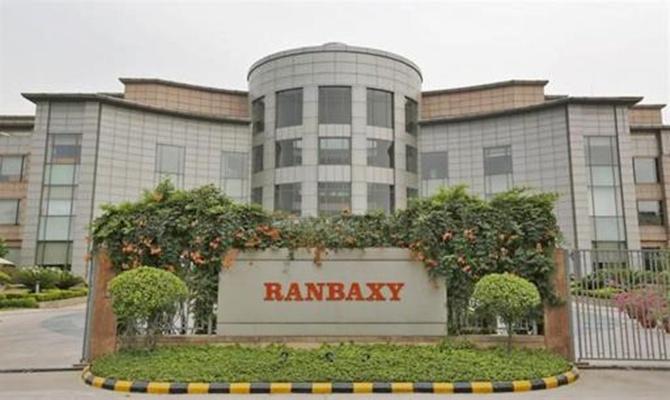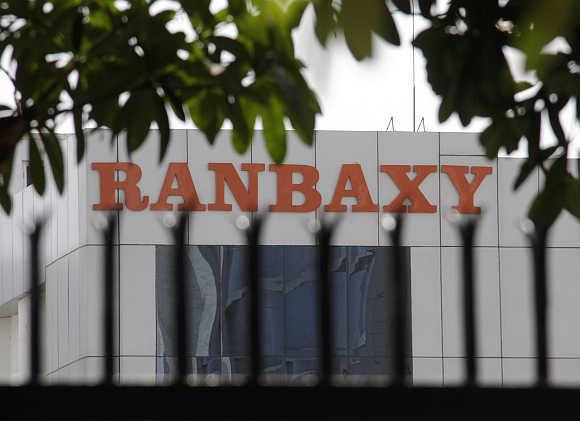
The company’s reputation has taken such a beating in the last few months that any attempt at image management will be an uphill task, says Bhupesh Bhandari.
Yet another factory of Ranbaxy, this time in Toansa (Punjab), has been banned from selling in the United States. Once again the company faces charges of unclean manufacturing practices.
The company’s reputation has taken such a beating in the last few months that any attempt at image management will be an uphill task. That’s perhaps why the company has become some sort of recluse - its silence is understandable. I don’t envy the Ranbaxy spokesperson his job.
In another time, the company would zealously guard its reputation. Till his death in 1999, Parvinder Singh, Malvinder and Shivinder’s father, used to run Ranbaxy out of a cramped but neat office at Nehru Place.
Two of us – journalists – had come to know that some key people had quit the company due to work pressure. They had found the pace of work, as the company was trying to expand rapidly in the US and elsewhere, too taxing.
We fixed a meeting with the human resource manager. One of us went first and engaged him in some inane conversation so that he would let his guard down.
...

Then the other one came and pounced on him with some really tough questions. The “good cop, bad cop” trick worked. By the end of the interview, the man was visibly shaken. We returned triumphant to our office, ready to punch out the report.
Less than an hour later, Singh called and asked me to meet him in his office the next day.
We still filed our report (it was carried by the publication we worked for), but Singh had managed to get in his note of dissent. At that time, Singh had been diagnosed with cancer and had lost a lot of weight.
The jacket hung limply from his shoulders. His facial hair had become sparse. But he had a task on hand: the company’s image had to be protected.
There was pride in what Ranbaxy had achieved – it had become a multinational corporation with roots in India – and Singh had ignored pain to ensure that it didn’t get bad press. Till the very end, any problem that had to be solved galvanised him into action.
...

One of those was to not leave Ranbaxy without a leader after his death - that would have spooked shareholders, employees as well as business partners. People were concerned. Will the new leader carry forward Singh’s vision or will he change course?
In March 1999, a conference of senior Ranbaxy managers was held at Shimla. Sumantra Ghoshal, the management guru, had come down to address it. But Ghoshal was uncomfortable because Devinder Singh Brar, the second in command and Singh’s closest aide, was unwilling to take the baton from Singh: he wanted to leave Ranbaxy and start something on his own.
Ghoshal confronted Brar before the meeting and told him plainly that he couldn’t talk of growth strategy when everybody was apprehensive as to who would succeed Singh. The hard talk helped. Brar agreed. Everybody sighed with relief. It is possible that Ghoshal had this man-to-man conversation with Brar at Singh’s behest.
Singh promptly made the announcement at the next board meeting in Delhi. On April 8, the annual general meeting of Ranbaxy shareholders was held at Mohali. Hundreds had gathered under a shamiana.
...

Singh conducted the meeting, full of energy. He took questions, posed for photographs and there were smiles all over. If there was sadness in Singh’s heart, none of it showed during the event.
No shareholder must have gone back that day with the thought that the company would be rudderless after Singh. Singh did all this to ensure that his death shouldn’t derail Ranbaxy.
It was the same concern that made him fight a bitter battle, inside the boardroom as well as outside it, with his father, Bhai Mohan Singh. By the early 1990s, Singh had realised that the old days of patent protection won’t last forever. To survive in an unprotected market, Ranbaxy had to look at new ways of doing business.
...

There was a huge opportunity abroad, and to tap that the best talent had to be brought into the company. Bhai Mohan Singh was a businessman of the old school. He gave primacy to family and friends over professionals. (“Everybody is Bhai Mohan Singh’s friend,” people would say of him.) Collision had become inevitable. Observers called it the Aurangzeb syndrome.
But Singh didn’t mind the negative publicity – the worst thing an Indian could do at that time was differ with his father – so long as the company stayed on course. The fight between father and son raised the bitterness level in the family.
Many counselled Singh to bury the hatchet so that sanity could prevail in the family, but Singh didn’t relent. Was it just his ego? Maybe, but it was clear to all that Singh wouldn’t let family spoil his plans for Ranbaxy.
Bhai Mohan Singh may have been at loggerheads with his son, but he too spoke of Ranbaxy with great fondness.
Sitting in the spacious drawing room of his house in Lutyens’ Delhi, opposite Claridges Hotel, his creaky knees covered by a shawl even in peak summer, he would often say almost till his last day he had four sons: Parvinder, Manjit, Analjit and Ranbaxy.
There is no reason to believe that the current management is any less concerned about the company’s reputation; it is just that the lapses have made their task really tough.